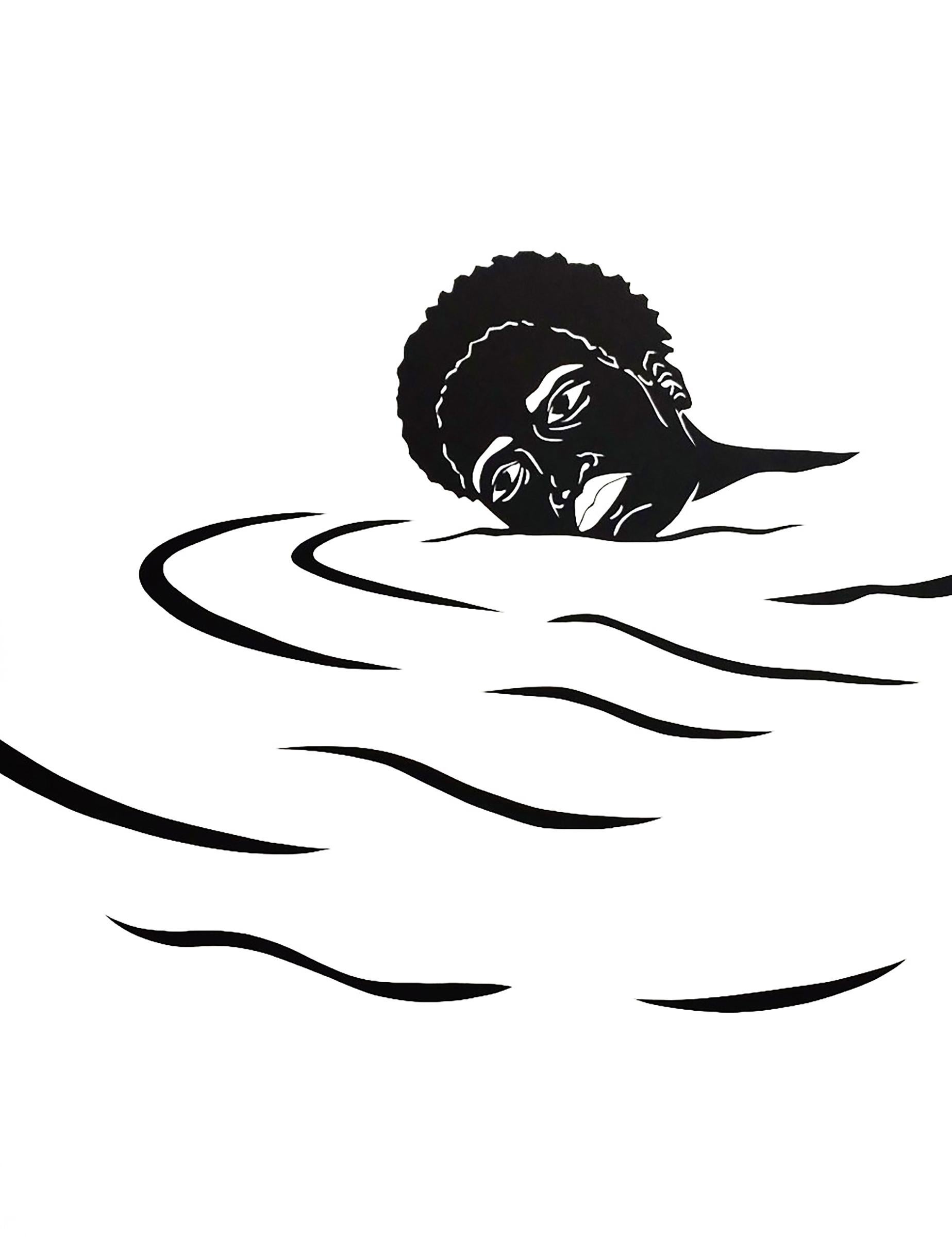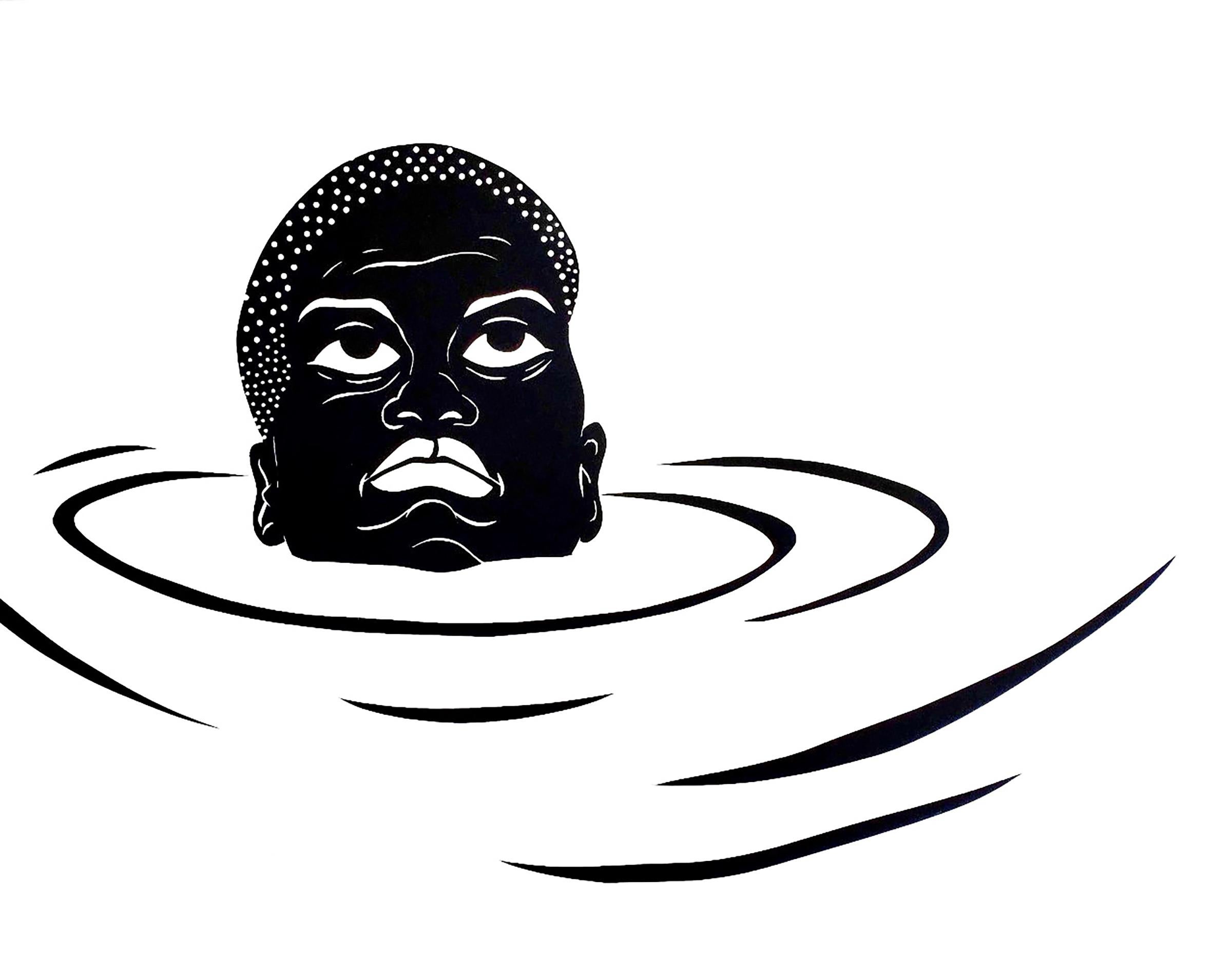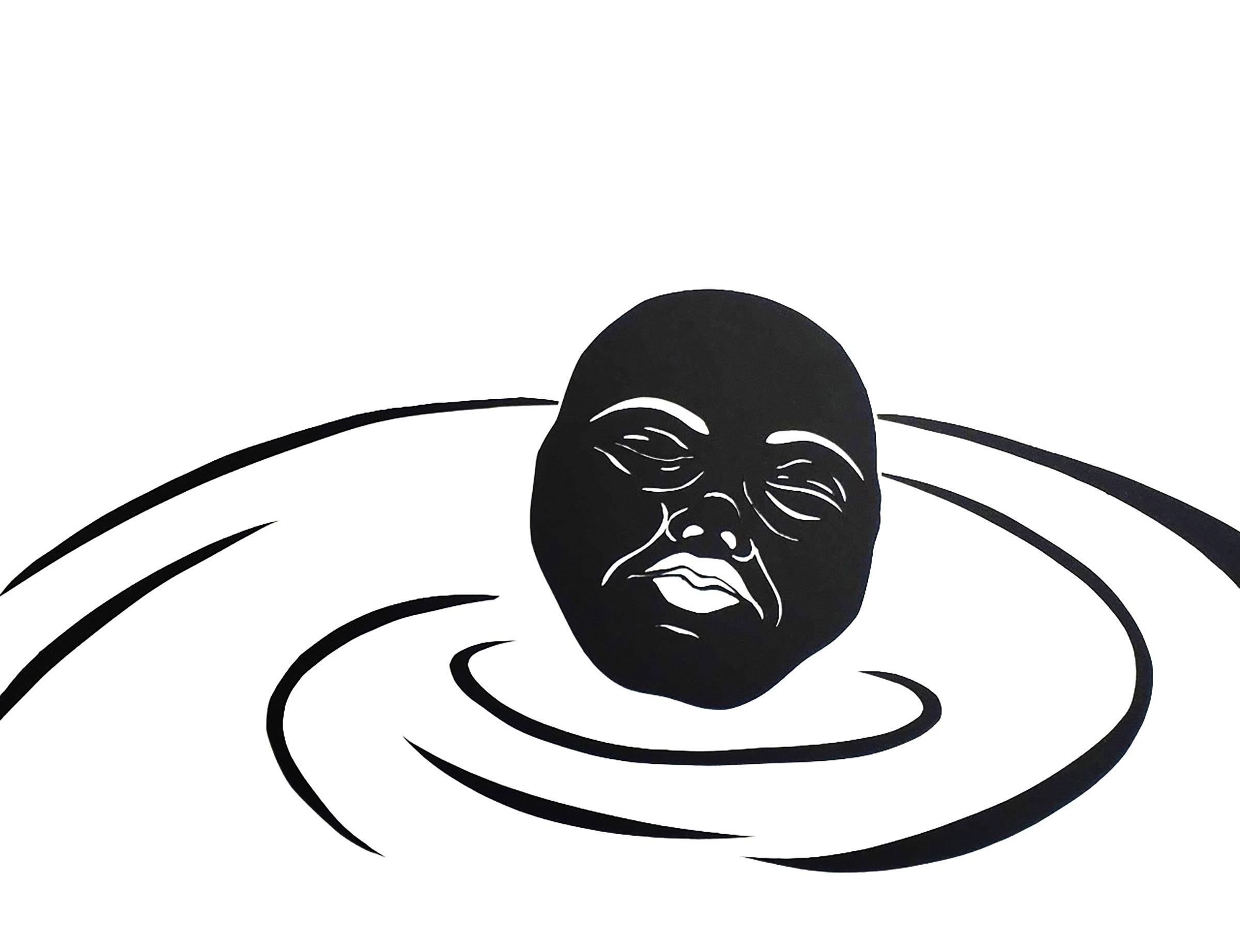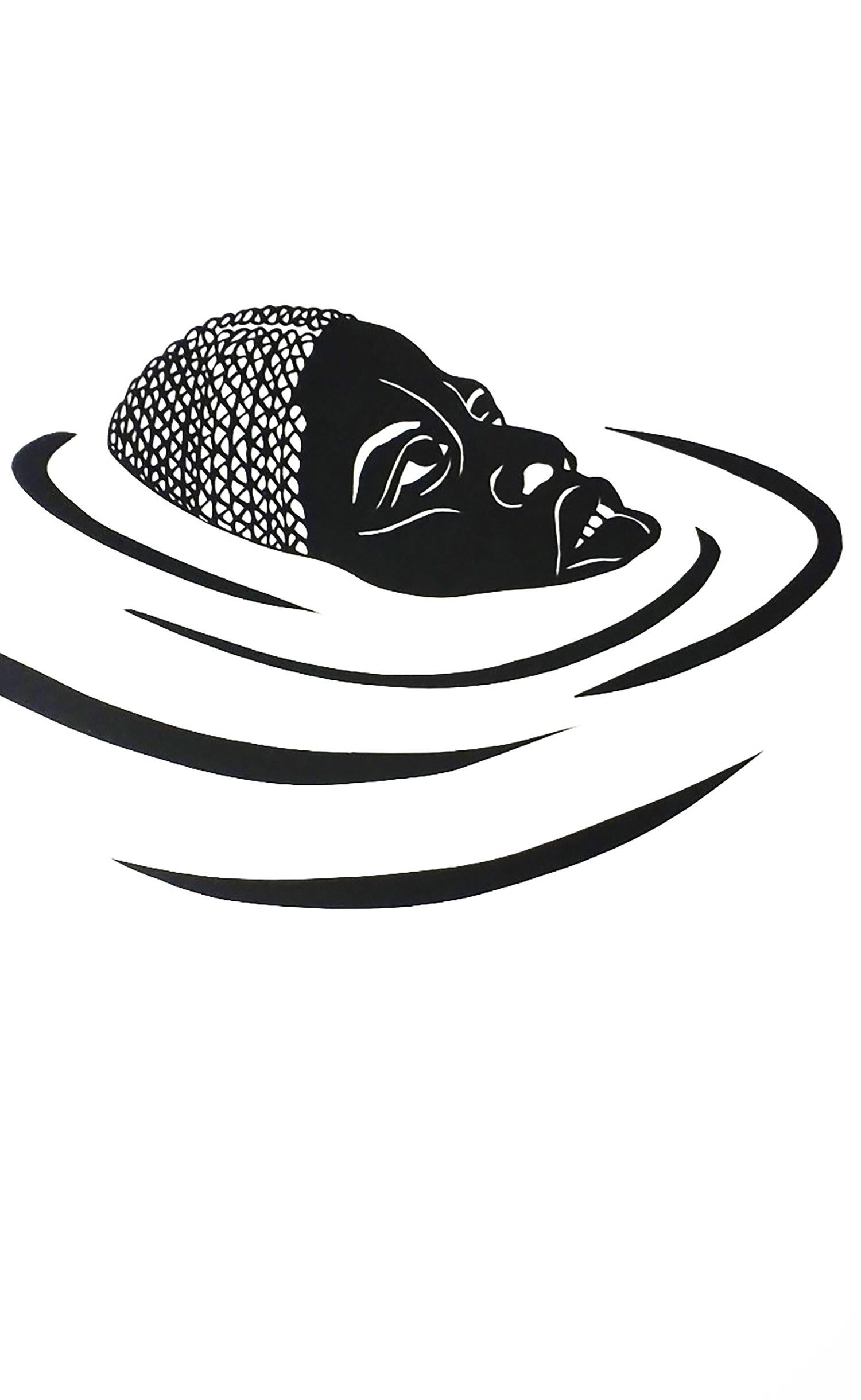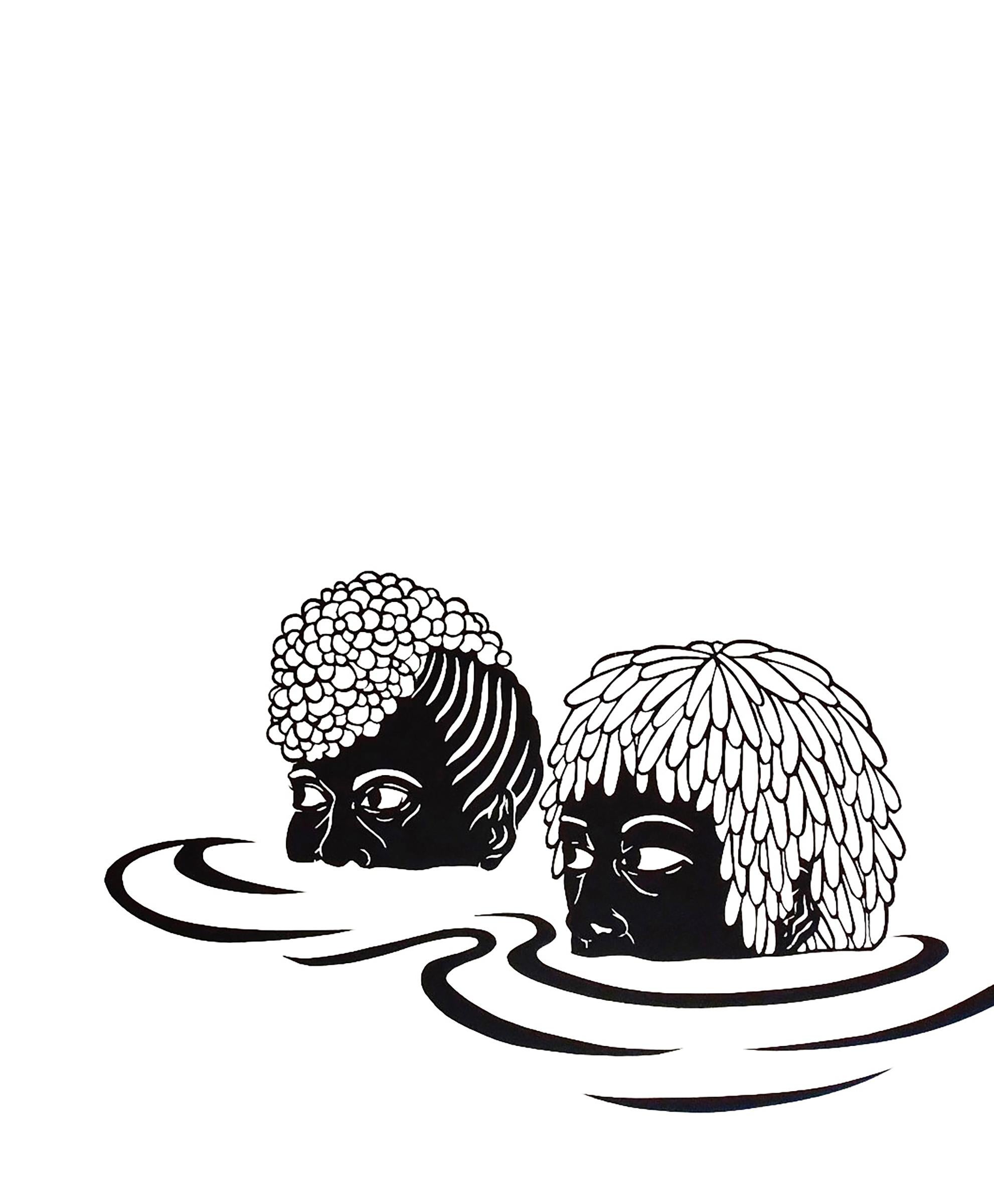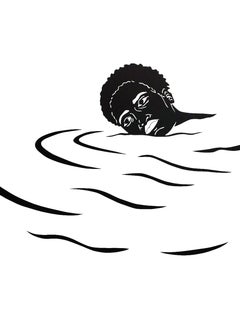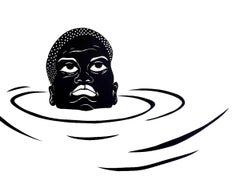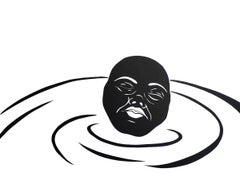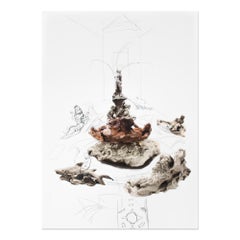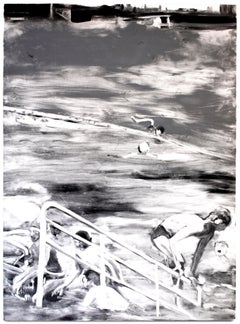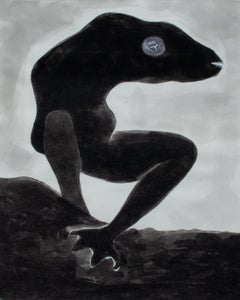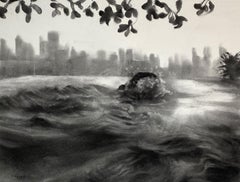Items Similar to 'Treading Water in The Deep End #3' - figurative - black & white - Kara Walker
Want more images or videos?
Request additional images or videos from the seller
1 of 4
Jerushia Graham'Treading Water in The Deep End #3' - figurative - black & white - Kara Walker2021
2021
$2,400
£1,861.41
€2,109.84
CA$3,434.81
A$3,753.24
CHF 1,945.81
MX$44,837.80
NOK 24,761.55
SEK 23,182.68
DKK 15,754.60
About the Item
'Treading Water In The Deep End #3' is a black and white figurative work made of cut paper.
Jerushia Graham is inspired by the works of Elizabeth Catlett, Kerry James Marshall, John Biggers, Leo & Diane Dillon, Norman Rockwell and Kara Walker.
Based in Atlanta, Jerushia Graham creates works straddling different media, including printmaking, book arts and fiber arts, but the most important aspect of her art is human interaction. Rather than outlining a full narrative her works are fragmented, implied narratives which invite the viewer to become collaborators and engage in quiet meditations about the physical world around us. Viewers are encouraged to provide their own impression of the moments before or after the images that are presented. The images she creates reflect on the ways in which we communicate with one another (i.e. body language, misunderstandings, unspoken understandings) and how we nourish our souls (i.e. quiet meditation, laughter, friendship, craft, recreation). She strives to create work that feels simple and honest, utilizing limited palettes and chosen media: papercuts, woodblocks, quilting, sewing & knitting. These are materials and techniques that are accessible to a wide social-economic group, can be utilitarian as well as artistic, are very tactile, and often feature a repetitive quality that is soothing. It is also essential to her work to honor and acknowledge her perspective as a Black Southern woman with a global outlook.
Graham, a working artist, is also the Museum Coordinator for the Robert C. Williams Museum of Papermaking. She exhibits both nationally and internationally. In addition to her curatorial efforts at the Paper Museum, she is the VP of Exhibitions/Curatorial for the North American Hand Papermakers. Graham has also been a guest curator for the Zora Neale Hurston Museum in Eatonville, FL and The Hudgens Center for Art and Learning in Duluth, GA. She was previously the Education Director for Atlanta Printmakers Studio as well as a book arts/papermaking/print professor for Kennesaw State University, and a foundations professor for the University of West Georgia, and the Art Institute of Atlanta-Decatur. Prior to her work in Georgia she served as the Museum Director and Education Coordinator for Spiral Q, an arts and social justice non-profit.
In 2019, she was nominated in the category of Artistic Excellence for the inaugural Hammonds House Honors. Graham was one of five artists selected by the GA Committee for the National Museum of Women in the Arts exhibit at MOCA GA, Paper Routes: Women To Watch 2020. Several of her papercuts traveled the state of Georgia in an exhibition sponsored by the Georgia Museum of Art and Lyndon House Museum, Highlighting Contemporary Art in Georgia: Cut and Paste. She earned an MFA in Book Arts/Printmaking from the University of the Arts in Philadelphia, PA, and BFA degrees in Fabric Design and Printmaking from the University of Georgia in Athens. Graham is interested in creating spaces for socially-minded introspection and empathy through her artwork, workshops, and curatorial projects.
- Creator:Jerushia Graham (1978, American)
- Creation Year:2021
- Dimensions:Height: 41.25 in (104.78 cm)Width: 33.25 in (84.46 cm)
- Medium:
- Movement & Style:
- Period:
- Condition:
- Gallery Location:Atlanta, GA
- Reference Number:1stDibs: LU15528341482
About the Seller
5.0
Vetted Professional Seller
Every seller passes strict standards for authenticity and reliability
Established in 2003
1stDibs seller since 2015
137 sales on 1stDibs
Typical response time: 3 hours
- ShippingRetrieving quote...Shipping from: Atlanta, GA
- Return Policy
More From This Seller
View All'Treading Water in The Deep End #5' - figurative - black & white - Kara Walker
Located in Atlanta, GA
'Treading Water In The Deep End #5' is a black and white figurative work made of cut paper.
Jerushia Graham is inspired by the works of Elizabeth Cat...
Category
2010s Contemporary Mixed Media
Materials
Archival Paper
'Treading Water in The Deep End #8' - figurative - black & white - Kara Walker
Located in Atlanta, GA
'Treading Water In The Deep End #8' is a black and white figurative work made of cut paper.
Jerushia Graham is inspired by the works of Elizabeth Catlett, Kerry James Marshall, John Biggers, Leo & Diane Dillon...
Category
2010s Contemporary Mixed Media
Materials
Archival Paper
'Treading Water in The Deep End #2' - figurative - black & white - Kara Walker
Located in Atlanta, GA
'Treading Water In The Deep End #2' is a black and white figurative work made of cut paper.
Jerushia Graham is inspired by the works of Elizabeth Cat...
Category
2010s Contemporary Mixed Media
Materials
Archival Paper
'Treading Water in The Deep End #2' - figurative - black & white - Kara Walker
Located in Atlanta, GA
'Treading Water In The Deep End #2' is a black and white figurative work made of cut paper.
Jerushia Graham is inspired by the works of Elizabeth Cat...
Category
2010s Contemporary Mixed Media
Materials
Archival Paper
'Treading Water in The Deep End #7' - figurative - black & white - Kara Walker
Located in Atlanta, GA
'Treading Water In The Deep End #7' is a black and white figurative work made of cut paper.
Jerushia Graham is inspired by the works of Elizabeth Catlett, Kerry James Marshall, John Biggers, Leo & Diane Dillon...
Category
2010s Contemporary Mixed Media
Materials
Archival Paper
'Treading Water in The Deep End #4' - figurative - black & white - Kara Walker
Located in Atlanta, GA
'Treading Water In The Deep End #4' is a black and white figurative work made of cut paper.
Jerushia Graham is inspired by the works of Elizabeth Cat...
Category
2010s Contemporary Mixed Media
Materials
Archival Paper
You May Also Like
Kara Walker, Theme for the Fons Americanus - Signed Print, Contemporary Art
By Kara Walker
Located in Hamburg, DE
Kara Walker (American, b. 1969)
Theme for the Fons Americanus, 2021
Medium: Archival digital pigment print on paper
Dimensions: 77.5 x 56 cm
Edition of 80: Hand-signed and numbered
C...
Category
21st Century and Contemporary Contemporary Figurative Prints
Materials
Archival Pigment
Temptation to Exist: black and white landscape of swimmers in pool
By Michele Zalopany
Located in New York, NY
Black and white cityscape or landscape with swimmers bathing with friends in a large pool or body of water. This monotype -- a unique painting in ink -- presents an atmospheric scene of European leisure and sports.
Paper 35 x 26 in. / 90 x 66 cm.
Monotype on white MBM Ingres d'Arches paper. Signed by the artist, annotated "IA", and dated 1990 lower right in pencil.
This large monotype depicts a group of young men swimming...
Category
1990s Contemporary Landscape Prints
Materials
Monotype
"Cronus Waiting" David Hare, Black and White Surrealist Composition
By David Hare
Located in New York, NY
David Hare
Cronus Waiting, 1990
Ink and Wash on Paper on Board
34 x 25 1/4 inches
“Freedom is what we want,” David Hare boldly stated in 1965, but then he added the caveat, “and what we are most afraid of.” No one could accuse David Hare of possessing such fear. Blithely unconcerned with the critics’ judgments, Hare flitted through most of the major art developments of the mid-twentieth century in the United States. He changed mediums several times; just when his fame as a sculptor had reached its apogee about 1960, he switched over to painting. Yet he remained attached to surrealism long after it had fallen out of official favor. “I can’t change what I do in order to fit what would make me popular,” he said. “Not because of moral reasons, but just because I can’t do it; I’m not interested in it.”
Hare was born in New York City in 1917; his family was both wealthy and familiar with the world of modern art. Meredith (1870-1932), his father, was a prominent corporate attorney. His mother, Elizabeth Sage Goodwin (1878-1948) was an art collector, a financial backer of the 1913 Armory Show, and a friend of artists such as Constantin Brancusi, Walt Kuhn, and Marcel Duchamp.
In the 1920s, the entire family moved to Santa Fe, New Mexico and later to Colorado Springs, in the hope that the change in altitude and climate would help to heal Meredith’s tuberculosis. In Colorado Springs, Elizabeth founded the Fountain Valley School where David attended high school after his father died in 1932. In the western United States, Hare developed a fascination for kachina dolls and other aspects of Native American culture that would become a recurring source of inspiration in his career.
After high school, Hare briefly attended Bard College (1936-37) in Annandale-on-Hudson. At a loss as to what to do next, he parlayed his mother’s contacts into opening a commercial photography studio and began dabbling in color photography, still a rarity at the time [Kodachrome was introduced in 1935]. At age 22, Hare had his first solo exhibition at Walker Gallery in New York City; his 30 color photographs included one of President Franklin Roosevelt.
As a photographer, Hare experimented with an automatist technique called “heatage” (or “melted negatives”) in which he heated the negative in order to distort the image. Hare described them as “antagonisms of matter.” The final products were usually abstractions tending towards surrealism and similar to processes used by Man Ray, Raoul Ubac, and Wolfgang Paalen.
In 1940, Hare moved to Roxbury, CT, where he fraternized with neighboring artists such as Alexander Calder and Arshile Gorky, as well as Yves Tanguy who was married to Hare’s cousin Kay Sage, and the art dealer Julian Levy. The same year, Hare received a commission from the American Museum of Natural History to document the Pueblo Indians. He traveled to Santa Fe and, for several months, he took portrait photographs of members of the Hopi, Navajo, and Zuni tribes that were published in book form in 1941.
World War II turned Hare’s life upside down. He became a conduit in the exchange of artistic and intellectual ideas between U.S. artists and the surrealist émigrés fleeing Europe. In 1942, Hare befriended Andre Breton, the principal theorist of surrealism. When Breton wanted to publish a magazine to promote the movement in the United States, he could not serve as an editor because he was a foreign national. Instead, Breton selected Hare to edit the journal, entitled VVV [shorth for “Victory, Victory, Victory”], which ran for four issues (the second and third issues were printed as a single volume) from June 1942 to February 1944. Each edition of VVV focused on “poetry, plastic arts, anthropology, sociology, (and) psychology,” and was extensively illustrated by surrealist artists including Giorgio de Chirico, Roberto Matta, and Yves Tanguy; Max Ernst and Marcel Duchamp served as editorial advisors.
At the suggestion of Jacqueline Lamba...
Category
1990s Abstract Mixed Media
Materials
Paper, Ink, Board
The Space Between, monochrome charcoal drawing of swimmer in city setting
By Patsy McArthur
Located in Dallas, TX
"The Space Between" is a unique charcoal drawing on paper. Scottish artist Patsy McArthur captures the dynamic movement of the swimmer against an urban backdrop.
This monochromatic ...
Category
2010s Realist Figurative Drawings and Watercolors
Materials
Charcoal, Archival Paper
The Touch - underwater black & white nude photograph - archival pigment 35x52"
By Alex Sher
Located in Beverly Hills, CA
Underwater black and white photograph of a young naked women touching her reflection in the water surface.
Original gallery quality archival pigment print on archival paper signed ...
Category
2010s Contemporary Black and White Photography
Materials
Archival Paper, Archival Pigment
$1,120 Sale Price
20% Off
Swimmer - Lithograph by Kim Hyang - 2008
By Kim Hyang
Located in Roma, IT
Swimmer is a lithograph realized by Kim Hyang.
This artwork is from the portfolio The Unique Collection for the Olympic Fine Arts 2008 presented during the Olympic Games and produce...
Category
Early 2000s Contemporary Figurative Prints
Materials
Lithograph
More Ways To Browse
Marshall James
Kara Walker
John Marshall
Antique Etching Signed
Lindsay Lohan
Black And White Photography Party
Skiing Prints
1979 Salvador Dali
Vintage New York Graphic Society Prints
Antique Landscape Engravings
Audrey Hepburn Print
Colorized Vintage Photos
Botanical Still Life
Dior 2020
Calligraphy Art
Fontana Lucio
Vinyl Records
Lennon John
